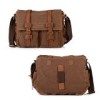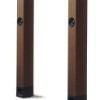Fujifilm X-T10 Mirrorless Digital Camera Kit (Silver) with XC16-50mm F3.5-5.6 and XC50-230mm F4.5-6.7 Lenses
Fujifilm X-T10 Mirrorless Digital Camera Kit (Silver) with XC16-50mm F3.5-5.6 and XC50-230mm F4.5-6.7 Lenses
- X-T10 Silver Body
- XC16-50mm F3.5-5.6 OIS II – Black
- XC50-230mm F4.5-6.7 OIS II – Black
Experience creativity, every day, with the Fujifilm X-T10 Mirrorless Camera. For the aspiring photo hobbyist, weekend shooter or photography student, the X-T10 builds on the X Series foundation of simplicity and elegance. The X-T10 features an SR Auto mode that makes it easy to take great images in any situation and eliminates all the guesswork compared to many DSLRs. Gain easy access to full manual controls with the control dials- with no menus to scroll through. With impressive focusing speed
List Price: $ 1,099.95
Price:
Similar Posts






it was the best decision to bring the Fuji X-T10,
Was this review helpful to you?

|Overall a very nice camera that takes excellent stills and very good action …,
#1 I want to say I was looking for a camera that can take high quality stills but can also do some occasional capturing of high school sports and some video of my kids. I think this is a perfect camera with the kit 18-55 lens.
#2 Stills. I am amazed at how well you can crop a photo and still maintain good resolution. This helps to frame the photo much easier. I don’t have to be as close to my subject yet I’m still able zoom in enough to have my “ideal” photo in the end. I like the filter effects that it produces and the clarity of both color jpegs and black and white photos. The detail is incredible.
#3 If I wanted a serious action camera I would have choose something else. How many action photos of a basketball game, volleyball match, or tennis match do I need? Plus I don’t want to sort through 5,000 pictures. I think a 20-25 good action shots during a handful of games is plenty. What could I possible do with 300 shots of my child driving to the basket or shooting a jumper? Hit rate is fairly good with a few keepers and few throwaways.
#4 Video. Again not great but not bad. I don’t do tons of video but I like to do some here and there. Plenty good compared to what I am used to you and for as much I shoot video. No complaints at all here!!! Good stuff.
#5 Fuji Apps. I was able to use the remote app to take long exposure photos of fireworks on July, 4th without touching the camera and blurring my shot. Worked flawlessly. I wish it was maybe a little smoother to hook up to my smartphone but still was pretty easy. The photo receiver app is pretty nice to. The camera is able to crop the photo as you are previewing the image on the camera and send the cropped picture to my phone with this app. It is then saved in the camera roll of my iPhone to share with friends/social media. Actually all very cool and useful.
#6 I have played a little with RAW photos and I use silkypix that is a program fuji recommends. Pretty basic but it does allow a little post picture processing to help change the picture for the better after you take it. I always shoot with Raw+Fine mode so I get both the high quality jpeg file and the RAW file.
Overall the Fuji X-T10 is an excellent camera for anyone looking to make the jump into advanced digital photography with a system that takes excellent stills, good occasional action shots, some good video here and there. Still shots are still the bread-n-butter of this camera but it can do action shots and video well enough for the most enthusiastic family photographers. Excellent camera.
Here a few quick photos without paying a lot of attention to any settings and messing around. JPEG straight from the Camera while I am learning. Some pros could probably do a better job : )
Was this review helpful to you?

|Excellent small camera,
I got to try a pre-production model for a few days and immediately put my order in to B&H. This is a great camera with a couple of exceptions.
Bottom line:
If you want an excellent stills camera that compact, light weight and reasonably priced. This is a great choice. It has very good autofocus, excellent color and a distinctive look. The camera is very customizable but can be beginner friendly. Fuji also makes superb lenses, which, in the end, may be more important than bodies. Cameras are improved every year. Those are the plusses. If you have big hands, want to do sport or wildlife photography or do high-end video, look elsewhere.
Update after one month:
I’m really loving the Fuji. I find it a bit small when using the 55-200 lens and am looking forward to getting the metal grip that Fuji promises. The rubbery coating on the body is great, very grippy and doesn’t stain. I picked the camera up after picking blackberries. The grip didn’t absorb the purple color that stains just about everything else. It’s actually an improvement over the standard Fuji surface.
Taking the time to fully customize the buttons really helps. Fuji left off the ISO dial, but by programming that function to the front dial, I can can click in the dial then change ISO without moving the camera from my eye. Excellent.
Extended Review:
Fujifilm photos look subtly different from those from other camera makers. That makes sense as they use a different sensor. I like the difference, especially when converting to B&W, which I think is one of Fuji’s strong points. This camera uses the same sensor as other Fuji cameras so you won’t find any revelations if you’re looking for something different.
Basically, it’s a mini-sized X-T1. The shape is the same just smaller. The sensor is the same as are most of the controls. There are four main differences. The ISO dial is gone, but it’s not a big deal. The front dial can be set to have two different functions, one normal and one if it’s pressed in. I have the ISO set to change on press to ISO, so I don’t miss the ISO dial at all. Having a kinda secondary mode dial in its place not only makes sense but is something I prefer. Note: I’m not saying that Fuji is better, just that I prefer it. Any interchangeable lens camera made to day can take excellent photos with a decent lens.
The other difference is more substantial. The buffer size is pretty small, only 7 or so frames. That is a big deal to some. Since I don’t spray and pray for my shots I haven’t noticed. I was a newspaper photog for a few years way back in the stone age, before autofocus and when motor drives gave an amazing three frames a second. We also walked uphill both ways to school, 5 miles in the snow barefoot and powered our cars with coal. So I’m not representative of people getting into the field now. Anyway, that’s a long and silly way of saying that I time my shots and don’t count on a fast frame rate and big buffer. Your mileage will vary.
The camera has great customizability and a lot of external controls, which should appeal to experienced photographers. It also has a switch that will put the camera in total program mode with just a flick, so this is a camera that I’d recommend to just about any person starting out. Image quality is excellent, easily the equal of any APSc sensor camera and honestly so close to my old Nikon D610 full frame camera that I don’t miss the bigger Nikon at all. The Fuji has fewer megapixels but we’ve more that passed the point where any modern interchangeable lens camera is more than good enough for most purposes. Oh, the price is very reasonable for what you get, too. And Fuji kit lenses are better than other’s.
The only reason I’d point someone away from Fujifilm cameras is if they wanted to get serious about video. Fujis are good enough for most purposes but fall way short of broadcast quality. Look at Sony or Panasonic if you want video.
This is a small camera. That’s both good and bad. It’s bad if you have big hands. You’ll find that the controls are cramped. It’s also bad if you want to use bigger lenses, like the 50-140mm. The camera doesn’t have enough weight or bulk to counterbalance the lens. That brings me to the third difference. The X-T1 has a battery pack/grip available that makes bigger lenses much more comfortable to manage. I’ve shot the X-T1 with the 56mm and it balances well. With the X-T10 the lens is a bit front heavy.
The fourth difference is that the X-T10 lacks weatherproofing. I suppose that if you shoot in the rain a lot or in dust storms that would make a difference. I’ve only had two weather sealed cameras in over 45 years of shooting and never had a problem, either professionally or backpacking in some pretty wild places. A little care will protect your camera and lenses.
That’s the negative. Personally, I’m not missing any of the X-T1’s…
Read more
Was this review helpful to you?

|